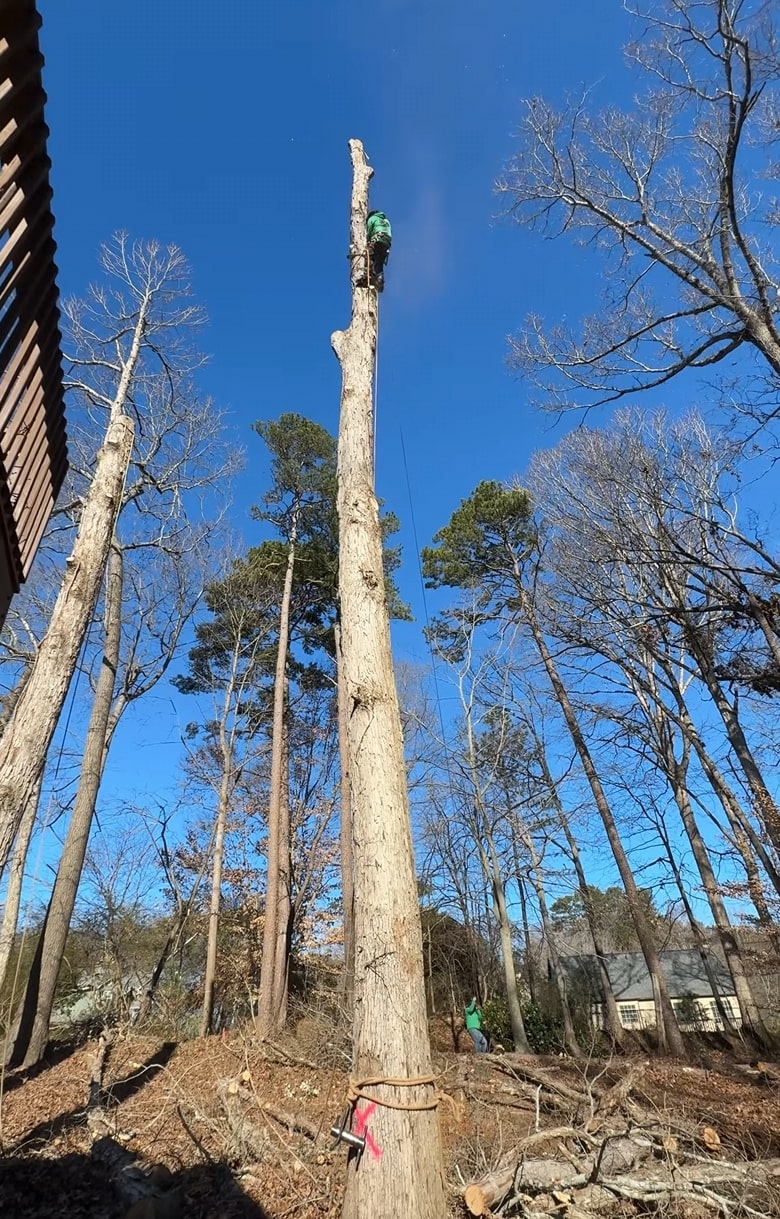Tree Trimming & Pruning Services
Expert Tree Trimming & Pruning in Maitland, FL
Proper tree trimming and pruning is both an art and a science. Our certified arborists understand the biology of trees and use proven techniques to promote healthy growth, improve structure, and enhance the natural beauty of your landscape while ensuring safety and longevity.

The Science of Proper Tree Pruning
Tree pruning is far more complex than simply cutting branches. It requires understanding tree biology, growth patterns, and species-specific characteristics to make cuts that promote healing and healthy development. Improper pruning can weaken trees, make them susceptible to disease, and create structural problems that persist for decades.
Our certified arborists follow International Society of Arboriculture standards for all pruning work. We understand where to make cuts to minimize stress on the tree, when pruning is most beneficial for different species, and how to shape trees to enhance both their health and appearance. Every cut we make is purposeful and based on scientific principles of tree care.
Fact #1: Trees have a natural ability to compartmentalize wounds, but this only works when cuts are made correctly at the branch collar. Fact #2: The timing of pruning can significantly impact tree health—some species are best pruned in winter dormancy, while others benefit from growing season pruning. Fact #3: Proper pruning can increase a tree's lifespan by decades while reducing the risk of branch failure and storm damage.
Types of Tree Pruning Services
Crown Cleaning
Removal of dead, diseased, and weak branches to improve tree health and appearance.
Crown Thinning
Selective removal of branches to increase light penetration and air circulation through the canopy.
Crown Raising
Removing lower branches to provide clearance for pedestrians, vehicles, or structures.
Crown Reduction
Reducing the overall size of the tree crown while maintaining natural shape and health.
Structural Pruning
Early intervention pruning to develop strong branch structure in young trees.
Vista Pruning
Selective pruning to open specific views while maintaining tree health and structure.
Benefits of Professional Tree Trimming
Regular professional tree trimming provides numerous benefits that extend far beyond simple aesthetics. Proper pruning improves tree health by removing diseased and damaged branches, reduces the risk of property damage from falling limbs, and can significantly extend the life of your trees. Well-maintained trees also add substantial value to your property and create safer outdoor spaces for your family.
Trimming also improves the structural integrity of trees by removing weak branch attachments and developing strong scaffold branches. This is particularly important for young trees, where proper structural pruning can prevent expensive problems later. Additionally, strategic pruning can improve air circulation around your home, potentially reducing energy costs and improving comfort.
From a safety perspective, regular trimming removes hazardous branches before they become dangerous, provides clearance for power lines and structures, and improves visibility around roadways and walkways. Professional trimming also helps maintain the natural beauty of your landscape while ensuring that trees remain healthy, strong, and safe for years to come.
Common Pruning Mistakes to Avoid
Many well-intentioned property owners cause serious damage to their trees through improper pruning techniques. "Topping" trees—cutting all branches back to stubs—is one of the most damaging practices. This technique removes the tree's ability to produce food, creates numerous weak points where new growth attaches poorly, and often leads to tree death or the need for complete removal.
Other common mistakes include making flush cuts that remove the branch collar, leaving stubs that won't heal properly, pruning at the wrong time of year, and removing too much of the canopy at once. These practices can stress trees, make them vulnerable to pests and diseases, and create long-term structural problems that are expensive to correct.
Professional arborists understand proper pruning techniques and timing to ensure that every cut benefits the tree's health and structure. We never top trees or use harmful practices, instead focusing on techniques that work with the tree's natural growth patterns to achieve your goals while maintaining tree health and beauty. Investing in professional pruning protects your trees and your property investment.
Timing and Frequency of Tree Pruning
The timing of tree pruning can significantly impact the tree's response and overall health. Different species have optimal pruning windows based on their growth patterns, flowering schedules, and susceptibility to pests and diseases. Our certified arborists understand these species-specific requirements and schedule pruning work to maximize benefits while minimizing stress and risk.
Generally, dormant season pruning (late fall through early spring) is ideal for most deciduous trees as it minimizes stress and allows for easy assessment of tree structure. However, some species, like maples and birches, may "bleed" sap if pruned during certain periods, though this is typically not harmful. Flowering trees often require specific timing to avoid removing next year's blooms.
The frequency of pruning depends on tree species, age, health, and location. Young trees benefit from more frequent structural pruning to develop strong frameworks, while mature trees typically need pruning every 3-5 years. Trees near structures, power lines, or high-traffic areas may require more frequent attention for safety reasons. Our maintenance programs are customized to each tree's specific needs and your property goals.
Ready for Expert Tree Pruning?
Protect your trees with professional pruning services. Contact our certified arborists for a free assessment.
